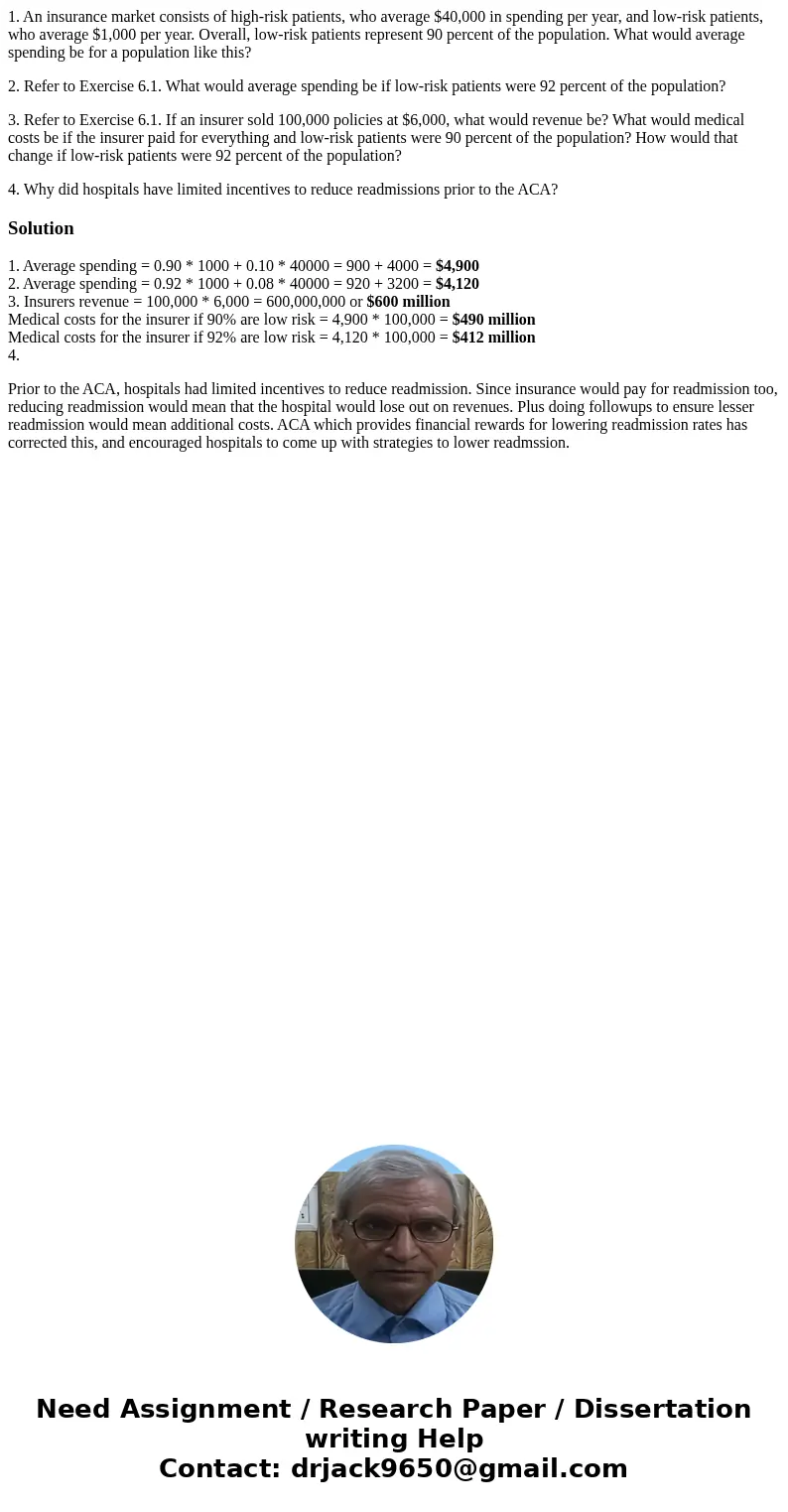1 An insurance market consists of highrisk patients who aver
1. An insurance market consists of high-risk patients, who average $40,000 in spending per year, and low-risk patients, who average $1,000 per year. Overall, low-risk patients represent 90 percent of the population. What would average spending be for a population like this?
2. Refer to Exercise 6.1. What would average spending be if low-risk patients were 92 percent of the population?
3. Refer to Exercise 6.1. If an insurer sold 100,000 policies at $6,000, what would revenue be? What would medical costs be if the insurer paid for everything and low-risk patients were 90 percent of the population? How would that change if low-risk patients were 92 percent of the population?
4. Why did hospitals have limited incentives to reduce readmissions prior to the ACA?
Solution
1. Average spending = 0.90 * 1000 + 0.10 * 40000 = 900 + 4000 = $4,900
2. Average spending = 0.92 * 1000 + 0.08 * 40000 = 920 + 3200 = $4,120
3. Insurers revenue = 100,000 * 6,000 = 600,000,000 or $600 million
Medical costs for the insurer if 90% are low risk = 4,900 * 100,000 = $490 million
Medical costs for the insurer if 92% are low risk = 4,120 * 100,000 = $412 million
4.
Prior to the ACA, hospitals had limited incentives to reduce readmission. Since insurance would pay for readmission too, reducing readmission would mean that the hospital would lose out on revenues. Plus doing followups to ensure lesser readmission would mean additional costs. ACA which provides financial rewards for lowering readmission rates has corrected this, and encouraged hospitals to come up with strategies to lower readmssion.

 Homework Sourse
Homework Sourse